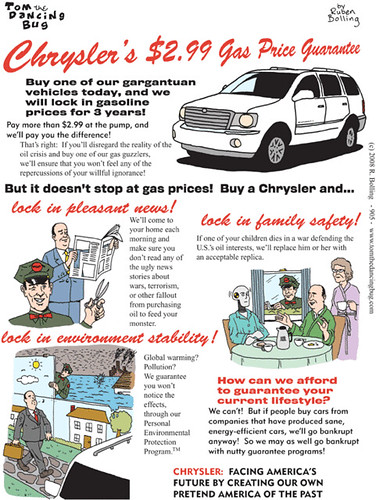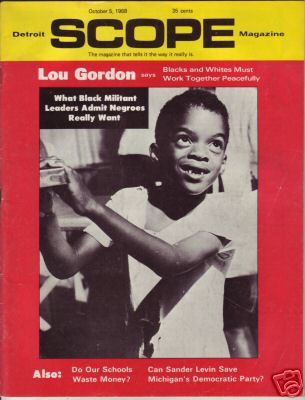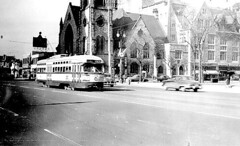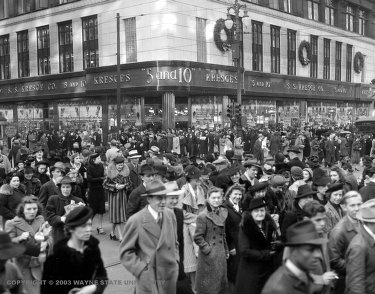Detroit Scope*
Alan calls our attention to a "hip-hop video/documentary about gentrification in detroit," set up in two parts on youtube:
1. http://youtube.com/watch?v=4ixL3-AdOsU
2. http://www.youtube.com/watch?v=hZmuCGen0-Q
He writes:
Awesome stuff, i'm really inspired by this. artist is invincible (featuring finale). song is called 'locusts' (first video is locusts pt 1, second video is locusts pt 2). When political hip-hop is done well, it's so beautiful.
My response:
These are great videos but the issues are pretty complex. Detroit has 25% vacant land!!!!!!!!!!!!!!!!!!!!!!!!! That's land with no buildings. Land that looks like prairie. Land that you could hunt on for pheasants, if it were legal to hunt in a city. That's over 30 square miles of empty prairie, in what was once the nation's fourth largest city in terms of population.
Detroit needs "inward" investment. Absolutely. People making bad decisions about how to deal with that is a different issue.
Detroit as a region, and Detroit specifically is screwed, because it is dependent on the U.S.-based auto industry, and that industry has proven that it is unable to adapt to fundamentally different material conditions presented to the industry nationally and globally. Note that there are many successful automobile manufacturers, just not those with their headquarters (GM, Ford, Chrysler) in the U.S.

This is a good example of Detroit thinking. Now last night, I saw an ad for the new Honda hydrogen powered car on television, but still, things are all about "next generation asphalt nation" not dealing with the fundamental issues. Last week while driving (yes) while moving, I listened a lot to WPFW and WAMU which I don't normally do (but should), and there was a speech by David Korten played on WPFW that was great.
More and more I am thinking that the point of politics and the legislative process is to put off hard decisions as long as possible and to prevent needed actions from occurring so that people won't have to be faced with making societally optimal decisions on matters that have far reaching economic implications beyond that of the individual.
(Did you ever calculate the cost of U.S. military and political intervention overseas to maintain access to relatively low cost oil supplies? Think about the support of Saudi Arabia vis-a-vis the concerns of people like bin Laden, or consider why Iranis might hate the U.S., given that a duly elected socialist prime minister was deposed by the U.S. in favor of the Shah back in the early 1950s--people have long memories. Note to President Bush, it isn't that "terrorists" hate freedom, they hate when their political, social and economic aspirations are subjugated to U.S. policy and preferences, including the cost of maintaining the asphalt nation at the expense of other nations).
Plus Detroit is screwed also because capital, not labor, is supreme vis-a-vis high-wage environments in U.S.-based industrial organizations. Many cars are being manufactured today in the United States, but with far fewer workers. That puts many people out of work, especially those with limited education. (Similarly, the U.S. steel industry produces more steel today than it did in the 1980s, with maybe 25% of the workers formerly employed by the industry to produce 25% less steel than produced today.)
Where manufacturing jobs require a great deal of knowledge, the jobs and high wages exist, but typically, far fewer workers are necessary in such situations.
The U.S. will gain some industry back as higher transportation costs will make it financially viable to bring back production from places with much lower wages. Still, that won't help Detroit.
----------
back in the late 1960s, Detroit had two competing weekly magazines reporting on Detroit's issues. The magazines grew out of the 1968 newspaper strike. One was called Scope, I don't remember the name of the other one.

Plus, in 1960, Detroit had about 2 million residents. On 177 square miles. The counties of Wayne, Oakland, and Macomb (Detroit is in Wayne County) added only 200,000 in population in that 40 years. The difference is that 1.2 million people moved out of Detroit into the other 1,800 square miles of the tri-counties. And it makes sense that exurban development is perhaps more pronounced in the Detroit region than anywhere else in the U.S., given the dominance of the automobile in that region.

Streetcar on Woodward Avenue in Detroit. My father's dentist office was just behind the Church, on Woodward Avenue, and is barely visible in this undated photo from the Motown Tranzit website (which seems to be down).

S.S. Kresge on Woodward Avenue, Detroit, 1934. Detroit News photo, Wayne State University. Yes, they were white for the most part. Detroit was a pretty segregated place I'm sure back then, but also in the 1960s and 1970s, when I was a young child. The 1967 riots led to a great deal of white flight. Non-white flight circumstances led to my leaving the city finally in about 1972.
Labels: progressive urban political agenda, sustainable land use and resource planning



0 Comments:
Post a Comment
<< Home